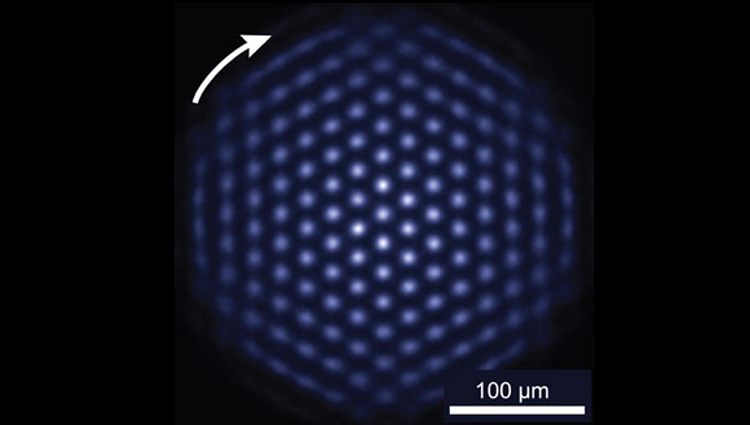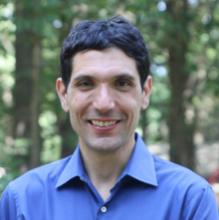350-'Qubit' Quantum Simulator Shatters Records

In this photograph of the NIST ion crystal, the ions are fluorescing, indicating they are all in the same state.
Image credits: Courtesy of Britton/NIST
(Inside Science) -- Quantum computers -- devices that operate according to the peculiar logic of the subatomic world -- promise to do things that even the world's fastest supercomputer can't do, such as break super-tough encryption codes in a fraction of the time that conventional computers would take. But more immediately, they promise to simulate the strange behavior of subatomic particles such as electrons in materials like high-temperature superconductors, which offer the potential of electricity transmission without energy-guzzling electrical resistance but are not very well understood.
Researchers at the National Institute of Standards and Technology* in Boulder, Colorado, announced significant advances towards a "quantum simulator" this week in an issue of Nature. Made of a gas cloud of ultracold beryllium ions arranged in a crystalline pattern through the use of electric and magnetic fields, their "quantum simulator" consists of a record 350 "quantum bits" -- or qubits -- capable of carrying out the unusual mathematical calculations made possible by the quantum world.
An ordinary digital bit can either be in a "0" or "1" state -- on or off. Conventional computers connect many digital bits--usually made of ordinary transistors -- and conduct logical operations with them. For example, the AND logical operation says if the first bit is 1, and the second bit is 1 then the result is 1. These logical operations enable sophisticated mathematical calculations.
But quantum bits are bizarre - -each bit can be 0 and 1 at the same time! That's because in the quantum world, particles can be in an undefined state -- an electron could simultaneously be in lower energy and higher energy states (which could represent 0 and 1 of binary logic) until a measurement or other disturbance forces them to enter a definite state. Until then they act as if they are 0 and 1 at the same time. This is called a "superposition" of states. Because each qubit is in multiple states at the same time, they can simultaneously go through many possible results of a logic operation at the same time. Stringing many qubits together can therefore exponentially increase the number of calculations that can be done on them as compared with conventional computers. The more qubits, the more powerful the quantum computer.
This new quantum simulator, with its 350 qubits, represents several advances, according to the authors.
"Our simulator breaks three historic barriers," lead author Joe Britton write to me in an email. Previous ion-trap simulators had just about 20 qubits, according to Britton. Second, earlier ion-trap simulators had the ions strung along in a line -- a single direction. The NIST simulator is made of a two-dimensional crystal, allowing for more versatile interactions between particles, Britton wrote. Finally, Britton stated that other quantum simulators based on neutral atoms are two dimensional, but are limited to operations between neighboring atoms. The NIST setup can have ions interacting at longer ranges--not just nearest neighbors but next-next-nearest neighbors, which also allows for more versatile simulations.
The quantum simulator is intended to model complex interactions between particles such as electrons in complex materials, which are very difficult to simulate in standard digital computers. But since the ions in the quantum simulator could enter superpositions just like electrons in complex materials, it is far easier to mimic their behavior and study the results.
Until recently, quantum-information devices have for the most part been very basic, performing elementary mathematical calculations usually easy to achieve in conventional devices.
But this device takes the potential of modeling important quantum processes into a serious realm, according to Britton.
"To my view, our experiment takes [the] idea of simulation from the realm of "toy models" to full-fledged 'quantum simulator,'" Britton wrote.
*For purposes of disclosure, I was the director of media relations at NIST from 2007 to 2011 before becoming editorial manager of Inside Science. As this appears to be a significant advance in the field of quantum information, which I've covered since the early 1990s, I decided to write about NIST again.

